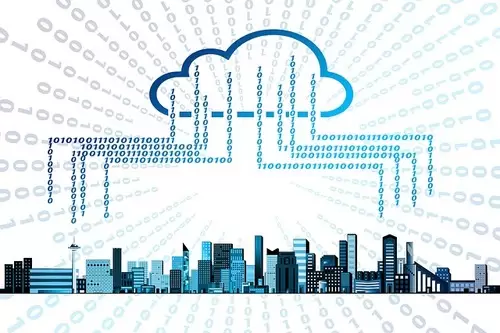It’s not hard to imagine a tech-driven world run primarily with the help of cloud databases. In fact, the industry is at a point where cloud databases may soon overtake their traditional counterparts in terms of usage and market size.
They show it in the report shared by TechRepublic pecifying that 49% of database revenue worldwide is tied to cloud databases. In dollar value, that equates to $39.2 billion.
The scenario above puts into perspective how much databases have evolved. In the ’70s, traditional databases were the only viable option as cloud technology was also in its infancy.
Building relational traditional databases was the norm and firms like Oracle and IBM began to dominate the sector.
The zeitgeist started to change in 1998 when Carlo Strozzi created a database. Itused ASCII as data file type and shell scripts for accessing data in lieu of SQL.
He named it Strozzi NoSQL (Not only SQL). Ten years later, an IT event in San Francisco organized by software engineer Johan Oskarsson gave the NoSQL concept the platform it needed to gain widespread attention.
Cloud technology was sufficiently advanced by this time so merging the two innovations didn’t take long. From then on until the present day, theu use both relational and NoSQL types for cloud databases.
But just how different is one from the other? Read on to learn more about the main differences between NoSQL and relational databases.
Predefined Schema
To work efficiently, relational databases require predefined schema. It is specified by Applied Science professional Rian Dolphin as a set of rules that the database will follow when processing tables and entries. This makes relational databases a good option if you primarily deal with information that won’t be modified on a frequent basis. One example is a database of personnel, with each having an ID number or another type of permanent designation.
It’s not as strict with NoSQL databases, as they can handle dynamic data that doesn’t need to adhere to predefined logic. One can use it to store information that you don`t easily confine into entity tables such as product marketing materials or media assets.
Data Format When Speaking of NoSQL and Relational Databases
A previous iTechGyan post focused on NoSQL databases, and it highlighted their flexibility in data formats. When using this type, you can upload data in its original structure and one application may be configured to accept XML and JSON formats.
It’s different from a workflow involving a relational database, as the latter entails coding for each element. If you need non-relational data, you must preprocess it before storage. Also, the data requires the extract, transform and load (ETL) logic for you to retrieve it.
Server Hosting for NoSQL and Relational Databases
One can achieve hosting a large NoSQL database by setting up multiple servers to meet high capacity demand. MongoDB’s post on ‘NoSQL vs. Relational Databases notes that they call it horizontal scaling, and it’s a cost-effective way to upgrade NoSQL databases
On the other hand, they set up a relational typeon one server that can store and process all its contents. Because of this requirement, scaling it means procuring a more powerful server. It usually comes at a steep price tag. That doesn’t even factor in the time and resources needed to migrate from an old server to a new one.
Transaction Complexity
Relational databases typically allow a low number of transactions per table in each user session. For instance, if you have 20 tables and a maximum of 10 transactions for every 5-minute session, you can do up to 1,000 transactions per session (20 x 10 x 5).
A NoSQL database can accommodate up to 1,000 transactions per table in every session. Taking the same 20 tables and 5-minute session example, your total transactions can reach 100,000 per session.
Further Development
They made Strozzi NoSQL mainly because its creator wanted to work with open-source tools. It still holds true at present as they commonly use NoSQL databases in the open-source community, and basically any developer or software expert can improve existing versions.
Relational databases are mostly tied to licensed software. It means further development and innovations mainly rely on the largest providers on the market. It’s not necessarily a disadvantage though. The same companies that pioneered the technology and startups alike continue to combine talent and resources toward its R&D. All that effort manifests into product updates or new releases.
With clear differences between NoSQL and relational databases, knowing what type to use is a matter of which one fits your needs better. It begins with defining project requirements, and our post on ‘Why You Should Start Using Test Management Tools’ can provide guidance on this process.

Petr is a serial tech entrepreneur and the CEO of Apro Software, a machine learning company. Whenever he’s not blogging about technology for itechgyan.com or softwarebattle.com, Petr enjoys playing sports and going to the movies. He’s also deeply interested in mediation, Buddhism and biohacking.

